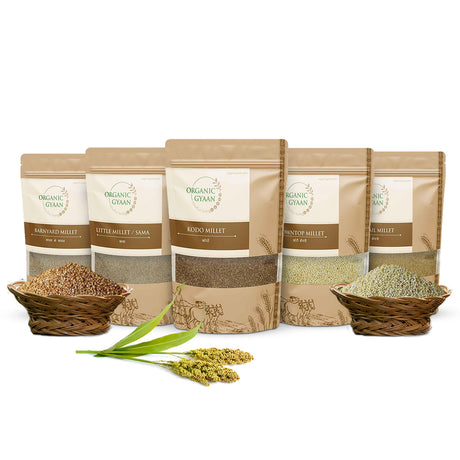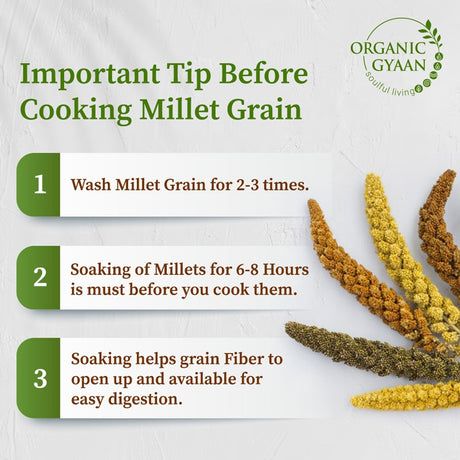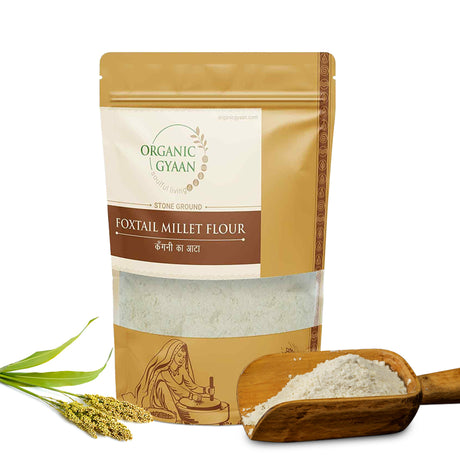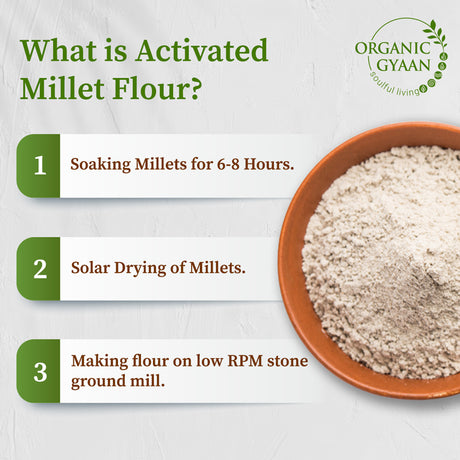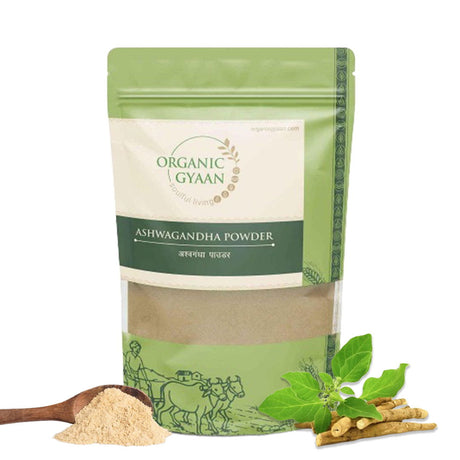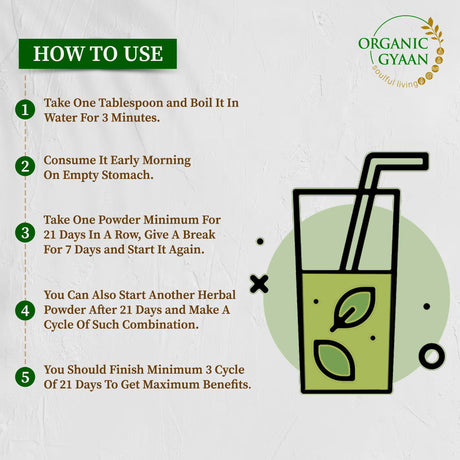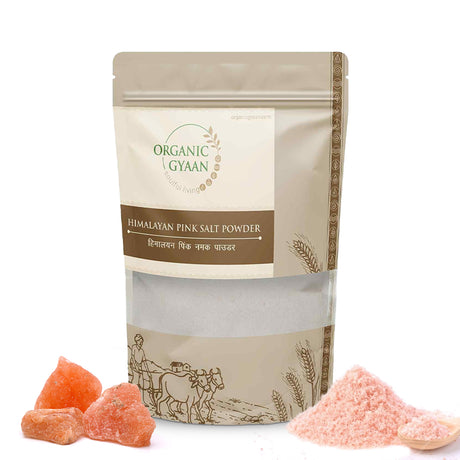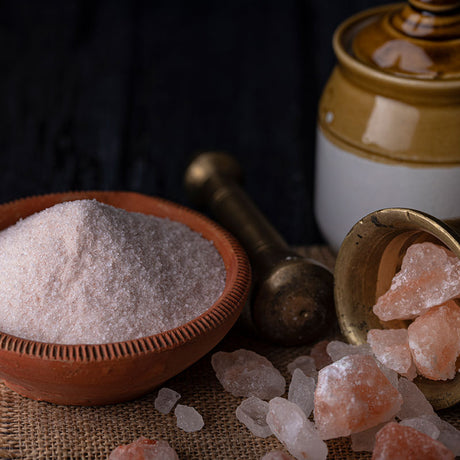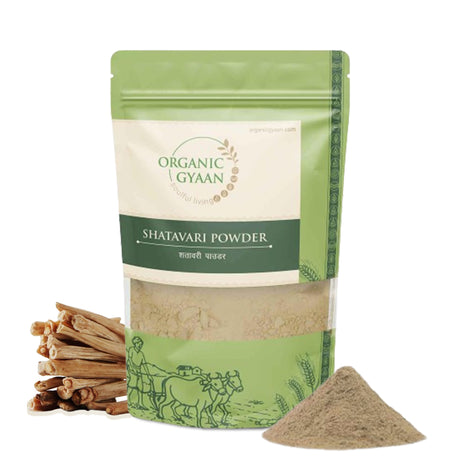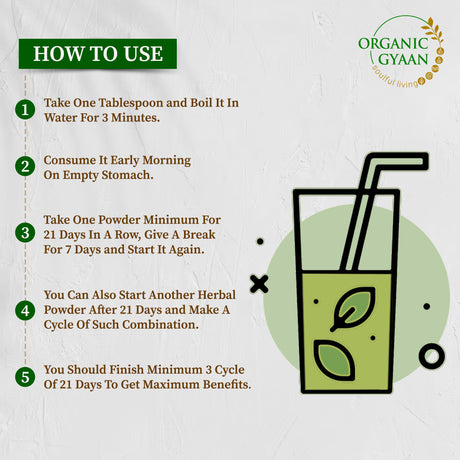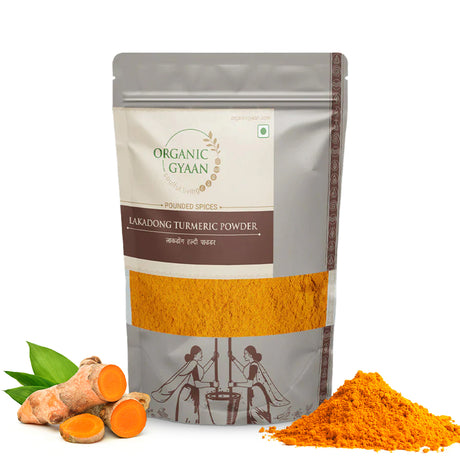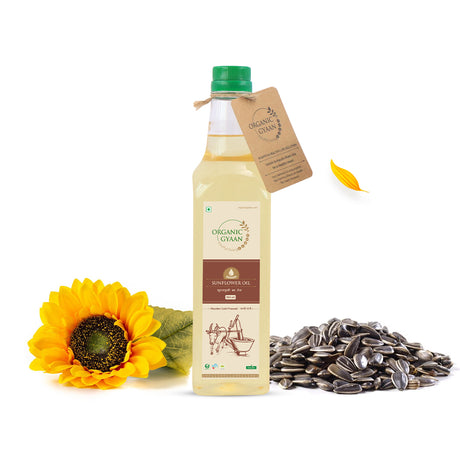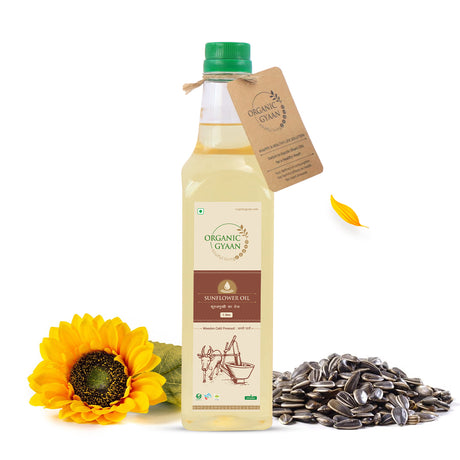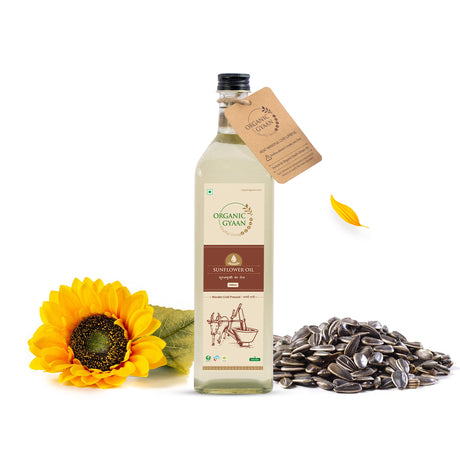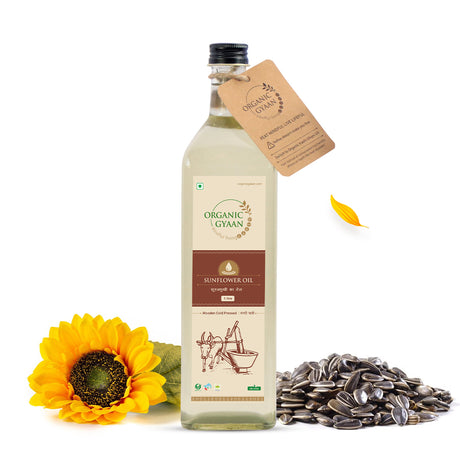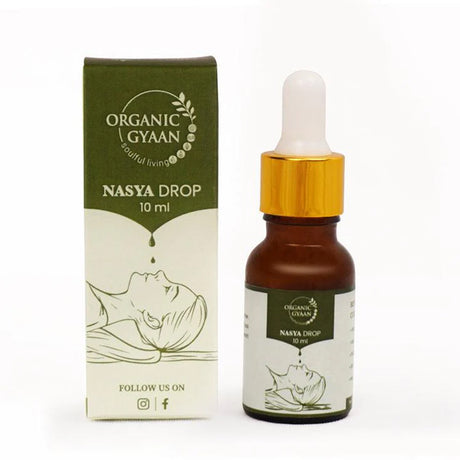कल्पना कीजिए कि ऐसी फसल जो खराब मिट्टी में भी पनपती है, कम से कम पानी में भी जीवित रहती है और जलवायु परिवर्तन से जूझती है। बाजरा, प्राचीन अनाज की वापसी, न केवल हमारी थाली में बल्कि टिकाऊ कृषि के प्रकाश स्तंभ के रूप में। जब दुनिया जलवायु परिवर्तन के बढ़ते खतरे के कारण बढ़ती आबादी को खिलाने के लिए संघर्ष कर रही है, तब बाजरा एक ऐसा समाधान प्रस्तुत करता है जो प्राचीन और भविष्योन्मुखी दोनों है।
टिकाऊ कृषि में बाजरे का उदय
बाजरा, जिसमें विभिन्न छोटे बीज वाली घासें शामिल हैं, कठोर फसलें हैं जो कठोर पर्यावरणीय परिस्थितियों के प्रति अपनी लचीलापन के लिए जानी जाती हैं। इन अनाजों की खेती हज़ारों सालों से की जा रही है, फिर भी वे गेहूँ और चावल जैसी ज़्यादा पानी की खपत वाली फसलों के सामने पिछड़ गए। आज, जब स्थिरता महत्वपूर्ण हो गई है, बाजरा दुनिया भर में कृषि और आहार में अपना सही स्थान फिर से हासिल कर रहा है।
मुख्य अंतर्दृष्टि और पर्यावरणीय लाभ
1. कम पानी की आवश्यकता
बाजरा सूखा प्रतिरोधी है, गेहूं और चावल जैसे पारंपरिक अनाज की तुलना में इसकी खेती के लिए काफी कम पानी की आवश्यकता होती है। यह विशेषता बाजरे को शुष्क और अर्ध-शुष्क क्षेत्रों में अविश्वसनीय रूप से मूल्यवान बनाती है जहाँ पानी की कमी एक गंभीर मुद्दा है। कम पानी का उपभोग करके, बाजरा न केवल यह सुनिश्चित करता है कि कीमती जल संसाधन संरक्षित हैं, बल्कि उन क्षेत्रों में भी खेती की अनुमति देता है जहाँ पानी की अधिक खपत वाली फ़सलें व्यवहार्य नहीं होंगी। न्यूनतम पानी के इनपुट के साथ बढ़ने की उनकी क्षमता टिकाऊ कृषि प्रथाओं के साथ पूरी तरह से मेल खाती है, जो खेती में पानी से संबंधित चुनौतियों का व्यावहारिक समाधान प्रदान करती है।
2. जलवायु लचीलापन
बाजरे में जलवायु संबंधी तनावों के प्रति सहज लचीलापन होता है, जिसमें सूखा, उच्च तापमान और मिट्टी की खराब उर्वरता शामिल है। यह लचीलापन उनकी आनुवंशिक विविधता और अनुकूली विशेषताओं से उपजा है, जो उन्हें कठोर पर्यावरणीय परिस्थितियों में पनपने में सक्षम बनाता है, जहाँ कई अन्य फसलें विफल हो जाती हैं। जलवायु परिवर्तनशीलता का सामना करने की बाजरे की क्षमता वैश्विक जलवायु परिवर्तन के सामने खाद्य सुरक्षा सुनिश्चित करने में एक महत्वपूर्ण कारक है। जैसे-जैसे तापमान बढ़ता है और मौसम के पैटर्न अधिक अप्रत्याशित होते जाते हैं, बाजरा एक ऐसी फसल के रूप में सामने आता है जो बदलती जलवायु के अनुकूल होने में सक्षम है, जिससे वे टिकाऊ कृषि के भविष्य में एक महत्वपूर्ण खिलाड़ी बन जाते हैं।
3. जैव विविधता और मृदा स्वास्थ्य
बाजरे की खेती कृषि जैव विविधता में महत्वपूर्ण योगदान देती है, जो लचीली कृषि प्रणालियों के लिए आवश्यक है। मिट्टी के पोषक तत्वों को खत्म करने वाली और जैव विविधता को कम करने वाली एकल खेती के विपरीत, बाजरे को मिश्रित-फसल प्रणालियों में उगाया जा सकता है, जिससे मिट्टी का स्वास्थ्य बेहतर होता है और एक विविध पारिस्थितिकी तंत्र को बढ़ावा मिलता है। बाजरा मिट्टी के कटाव को रोकने, जल प्रतिधारण में सुधार करने और लाभकारी सूक्ष्मजीवों का समर्थन करके मिट्टी की उर्वरता बनाए रखने में मदद करता है। मिट्टी के स्वास्थ्य को बढ़ाने में उनकी भूमिका टिकाऊ खेती प्रथाओं में उनके महत्व को और रेखांकित करती है, जो एक संतुलित पारिस्थितिकी तंत्र को बढ़ावा देती है जो पौधों और जानवरों के जीवन की एक विस्तृत श्रृंखला का समर्थन करती है।
4. किसानों की आजीविका को समर्थन
बाजरा किसानों के लिए एक स्थायी आजीविका विकल्प प्रदान करता है, खासकर सीमांत और संसाधन-विवश वातावरण में। पानी, उर्वरक और कीटनाशकों के लिए उनकी कम इनपुट आवश्यकताओं को देखते हुए, बाजरा छोटे और सीमांत किसानों के लिए आर्थिक रूप से व्यवहार्य विकल्प प्रदान करता है। जलवायु झटकों के प्रति संवेदनशील क्षेत्रों में बाजरे की खेती एक रणनीतिक विकल्प हो सकती है, जिससे कृषि समुदायों के लिए खाद्य सुरक्षा और आय स्थिरता सुनिश्चित हो सकती है। बाजरे की खेती को प्रोत्साहित करके, टिकाऊ खेती की पहल किसानों को सशक्त बना सकती है, गरीबी को कम कर सकती है और ग्रामीण विकास में योगदान दे सकती है।
5. कार्बन फुटप्रिंट कम करना
उर्वरकों और कीटनाशकों जैसे सिंथेटिक इनपुट की न्यूनतम आवश्यकता के कारण बाजरे का कार्बन फुटप्रिंट कई अन्य फसलों की तुलना में कम होता है। उनकी खेती ग्रीनहाउस गैस उत्सर्जन को कम करने में योगदान देती है, जो जलवायु परिवर्तन को कम करने में एक महत्वपूर्ण कारक है। बाजरे को कृषि प्रणालियों में एकीकृत करके, कृषि के समग्र कार्बन फुटप्रिंट को कम करना संभव है, जिससे यह अधिक टिकाऊ बन जाता है। बाजरे के पर्यावरणीय लाभ, उनके पोषण संबंधी लाभों के साथ मिलकर, उन्हें एक ऐसी फसल के रूप में स्थापित करते हैं जो टिकाऊ खाद्य प्रणालियों और पर्यावरण संरक्षण में महत्वपूर्ण योगदान दे सकती है।
समर्थन तथ्य और आंकड़े
शोध से पता चलता है कि बाजरा चावल की तुलना में 70% से अधिक कम पानी का उपयोग करता है और उर्वरकों के भारी उपयोग के बिना खराब मिट्टी की स्थिति में भी पनप सकता है। इससे न केवल कीमती जल संसाधनों का संरक्षण होता है बल्कि रासायनिक इनपुट पर निर्भरता भी कम होती है, जिससे खेती अधिक टिकाऊ और पर्यावरण के अनुकूल बनती है।
टिकाऊ खेती में बाजरे की भूमिका का अन्वेषण
1. सूखा प्रतिरोध: जल की कमी वाले क्षेत्रों में उगने की बाजरे की उल्लेखनीय क्षमता, उन्हें शुष्क जलवायु में खाद्य सुरक्षा सुनिश्चित करने के लिए एक महत्वपूर्ण फसल बनाती है।
2. कार्बन फुटप्रिंट को कम करना: रासायनिक उर्वरकों और कीटनाशकों की न्यूनतम आवश्यकता के साथ, बाजरा कृषि उत्पादन से जुड़े ग्रीनहाउस गैस उत्सर्जन को कम करने में योगदान देता है।
3. किसानों की आजीविका में वृद्धि: बाजरा सीमांत भूमि पर उगाया जा सकता है, जहां अन्य फसलें विफल हो जाती हैं, जिससे किसानों को चुनौतीपूर्ण पर्यावरणीय परिस्थितियों में भी आय का एक विश्वसनीय स्रोत मिल जाता है।
बाजरा की खेती को बढ़ावा देने के लिए कार्यान्वयन योग्य रणनीतियाँ
1. नीतिगत समर्थन: सरकारें और कृषि निकाय बाजरा की खेती करने वाले किसानों को प्रोत्साहन और समर्थन दे सकते हैं।
2. अनुसंधान एवं विकास: उच्च उपज देने वाली, रोग प्रतिरोधी बाजरे की किस्मों के विकास के लिए अनुसंधान में निवेश करने से उनका आकर्षण और बढ़ सकता है।
3. उपभोक्ता जागरूकता: बाजरे के स्वास्थ्य और पर्यावरणीय लाभों के बारे में उपभोक्ताओं को शिक्षित करने से मांग बढ़ सकती है और अधिक किसान इन अनाजों की खेती के लिए प्रोत्साहित हो सकते हैं।
बाजरे के साथ आगे का रास्ता
टिकाऊ खेती का भविष्य बाजरे के साथ उज्जवल है। जैसे-जैसे हम बढ़ती आबादी की मांगों को अपने ग्रह के संरक्षण की आवश्यकता के साथ संतुलित करने का प्रयास करते हैं, बाजरा एक समाधान के रूप में उभरता है जो किसानों के लिए खाद्य सुरक्षा, पर्यावरणीय स्थिरता और आर्थिक व्यवहार्यता को संबोधित कर सकता है।
निष्कर्ष
बाजरा केवल अतीत का अनाज नहीं है, बल्कि वास्तव में भविष्य की फसल है। टिकाऊ कृषि में उनका योगदान अमूल्य है, जो जलवायु परिवर्तन को कम करने, जल संरक्षण और जैव विविधता का समर्थन करने का एक तरीका प्रदान करता है। जब हम इन प्राचीन अनाजों को अपनाते हैं, तो हम एक अधिक टिकाऊ, लचीले और स्वस्थ विश्व का मार्ग प्रशस्त करते हैं।
अपने आहार में बाजरे को शामिल करके, उनकी खेती को बढ़ावा देने वाली नीतियों का समर्थन करके और उनके पर्यावरणीय लाभों के बारे में लोगों को बताकर एक टिकाऊ भविष्य की ओर बढ़ने के अभियान में शामिल हों। हम सब मिलकर, एक-एक अनाज के ज़रिए बदलाव ला सकते हैं।


